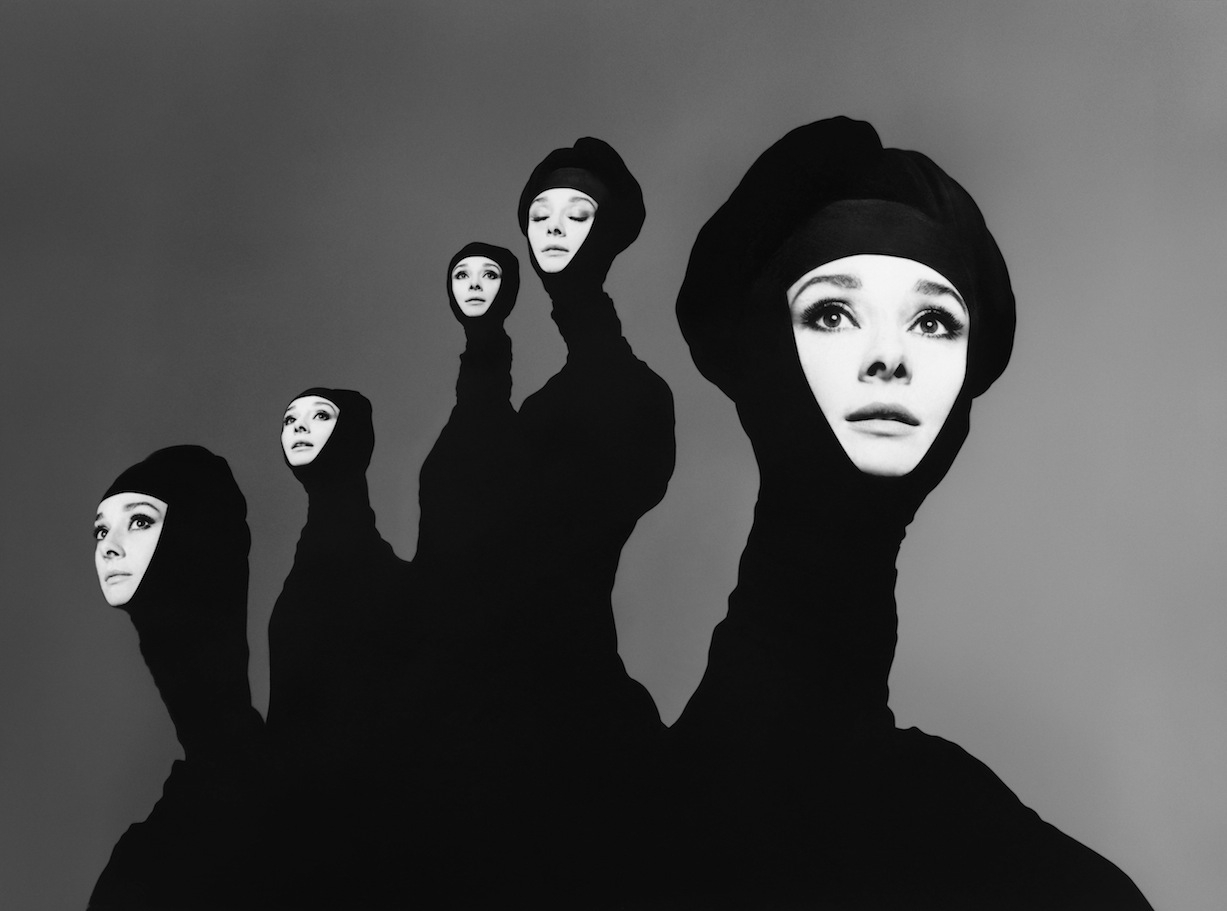Commenting on the opportunism of writerly fame, Jorge Luis Borges said, ‘The important thing is the image you create of yourself in other people’s minds.’ This conjunction of the work of Richard Avedon and Andy Warhol looks initially like an opportunistic bit of celebrity spectacle (with the celebrities as both artists and subjects); but it doubles as a prescient study of how identity creation, in our exponential image culture, is a collaborative process between image-maker, medium and subject. In a culture ever more conscious of its own self-presentation, these photographs are one of the primary sources of where we are now at – on YouTube, Instagram and reality TV, at fairs that transform art into signifiers of its creator’s brand identity.
Both artists spent much time picturing famous people, beginning in the 1950s as commercial artists: Warhol as a successful illustrator; Avedon as a fashion and society photographer for high-end magazines. The exhibition covers the chronologies of their careers from the 1950s to the 1990s (both figures are early examples of what we now call ‘career artists’: artists intent on honing their development into a consumably coherent narrative and making sure they are in the right places to ensure its consumption). From the beginning, Avedon is a facilitator of the celebrity image, Warhol its deconstructor.
A 1961 Avedon portrait of Jacqueline Kennedy, the young First Lady, adopts a conceit – later his trademark – of placing the subject against a monochrome background to convert her into a shape, a cutout signifying the camera’s generalisation of her particularities by isolating them against an undifferentiated foil. To this extent, and in those equally branded negative frames left around his later images, Avedon’s photography is self-reflexive. Sleek as a bat in her trained silk sheath, Jackie is an emblem of America’s self-satisfaction in its global primacy. By contrast, Warhol’s Marilyn (1962) dismantles the image it creates. Broad areas of turquoise, lemon, mauve and orange acrylic block in the main areas of the black, silkscreened head that is applied to them. But the two registers – the gestural and the photographic – are slightly out of sync. The extended time of the brushed-on paint qualifies the image as merely instantaneous. The effect is convulsive: the image a brittle skin, a shrill pitch that the multicoloured underpainting cannot quite justify.
Contraries as artists, Avedon and Warhol shared a curiosity about how power – political, social, economic, sexual – resolves itself as image. Avedon’s The Family (1976) is a wall-wide grid of head-to-waist portraits manifesting all facets of political power: presidents, senators, union leaders. The series has an August Sanderesque taxonomical intent. Do the members of this elite share outward traits? And if these are the parts, what can we infer about its whole? Against white foils, they are (social) butterflies pinned into frames. There is a characteristic duplicity in Avedon’s rhetoric of revealing a sitter’s authentic presence, his or her ‘true’ self, while cultivating an idiom based on veneers and postures. He was always working the pres- tige of his sitters to rub off on his own reputa- tion. It is not coincidental that when he had the clout to photograph the big hitters of the arts establishment, he gravitated towards the existentialists – photographs of Francis Bacon and Samuel Beckett are included – as though, by association, to make their soundings of body and psyche synonymous with his own artistic purpose, and imply its corresponding depth. He liked to strip his subjects, another sign for the baring of an essence.
The equivalent opportunism in Warhol’s later portraiture is his willingness to accept commissions from the rich and famous to produce ‘Warhols’ of them; but, as always, his cynicism, freely acknowledged, preempts itself. Three portraits of the Iranian royal family centred on the Shah (Mohammad Reza Shah Pahlavi, Shah of Iran, 1977) flatter their image as much as they pity them, with the pity not exempting Warhol’s own weakness in having been tantalised by their glamour. That the painted zones underlying the Shah’s image are unusually almost congruent with its contours is as much a political as a formal recognition. Warhol pictures the Shah becoming the power he projects and as nothing more than a projection.
Gagosian Gallery, Britannia Street, London 9 February – 23 April
This article first appeared in the Summer 2016 issue of ArtReview
